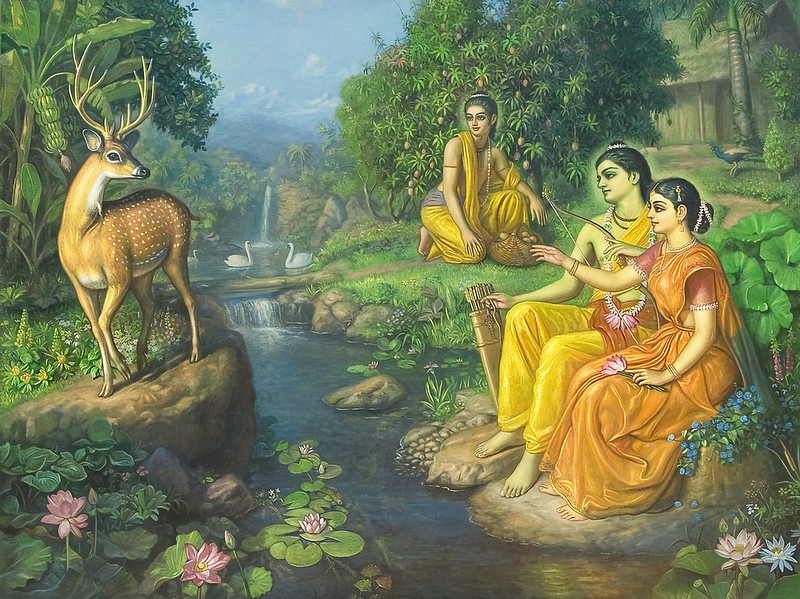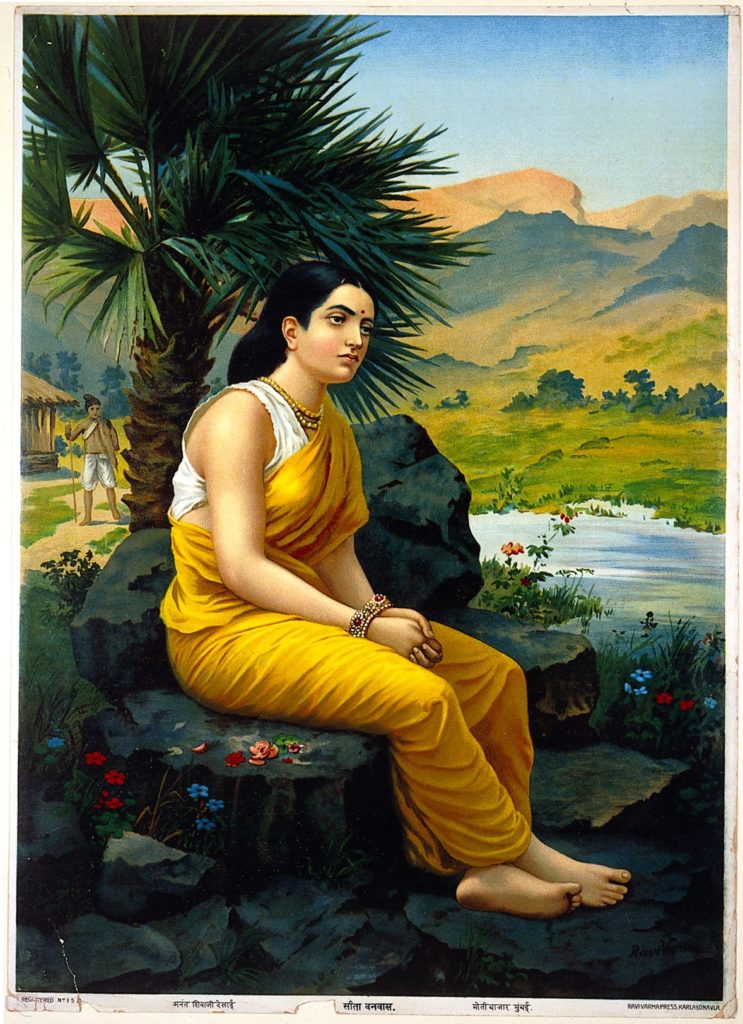The Hindu epic, Ramayana, introduces Sita as the epitome of womanhood. Sita plays a prominent role in this ancient epic written by sage Valmiki. Ramayana is considered as the light that guides people in the path of life. And Sita is the lamp that glows for women. She is said to be an incarnation of Goddess Lakshmi. She is known as the daughter of earth and called Bhoomiputri.
Sita is also known as Maithili because she was the daughter of the king of Mithila. Her father was also known as Videh. That’s why she was also known as Vaidehi.

Throughout the pages of Ramayana, Sita fights dreadful challenges and emerges as a strong and dignified woman. It is an inspiring experience to walk down the streets where Sita laid down the principles that adorn a woman’s life.
The Story of Birth of Sita
One day while King Janaka was ploughing a field to ensure the prosperity of his kingdom, he discovered a girl child in the furrow. He accepted the glorious gift of mother earth and nurtured Sita as the princess of Mithila. Amidst the pampering and protection of her father, Sita grew old to be a woman enriched with great virtues.
King Janaka wanted to bless Sita with the best and thus he arranged a swayamvara (a ceremony to select one’s spouse) and chose the prince of Ayodhya, Ram as an ideal husband for his beloved daughter. Within no time Sita ruled over everyone’s heart in Ayodhya. Her humble and responsible behaviour adorned her principled personality and won her appreciation and love. But she didn’t spend much time in the Palace of Ayodhya.
Vanvaas or The Exile
King Dasaratha had to banish his son, Ram to a fourteen years exile. Thus, Sita had to choose between the luxuries of the palace and the duties of marriage. As the women who walked on the path of principles, she didn’t take a moment and sacrificed the royal life for fulfilling her duty as a wife. Sita along with her husband, Ram and brother in law, Lakshman set off for the exile.
The Golden Deer

Sita supported Ram at every step of this struggle. Exile was challenging but Sita was stoical. The presence and support of each other strengthened them and smoothened the exile. But one unfortunate day everything changed.
Sita saw a golden deer and requested Ram to bring it for her. But the deer was just a plan of evil Ravana. The cry of the deer in the voice of Ram convinced Lakshman to look for his brother and leave Sita alone. Before leaving he drew a boundary outside the hut that is known as the Lakshman Rekha. When Sita was Alone Ravana appeared in the disguise of a sage and cried for alms.
Sita was a generous woman, and she could not refuse a sage. She tried to provide him while standing within the Lakshman Rekha but Ravana tricked her and she stepped out of the boundary. With this step, the disguise disappeared and Ravana revealed his wickedness. But Sita was so chaste that Ravana could not touch her. Thus, he lifted the whole land where Sita stood and abducted her to his Kingdom, Lanka.
Sita in Ashok Vatika
Ravana trapped Sita amidst the demonesses in the Ashoka Vatika. Sita’s heart was so pure that she befriended the demoness as well. She refused all the offers of Ravana that promised her luxury and the crown of Lanka. She waited for her husband in ordinary clothes to win over Ravana and rescue her. Even when she had a chance to run away with Hanuman, she chose her dignity and refused to elope as a coward. Eventually, her longing came to end but her suffering didn’t.
After Ram rescued her, she had to pass the Agni Pariksha to prove her chastity. Yet when she went back to Ayodhya no one accepted her as the rightful Queen. Since now Sita kept her patience but when her dignity was questioned, she happily left for another exile and this time without her Husband.
The Second Exile
Sita was pregnant and alone, yet she never complained about the hardships that life had served her. In the ashram of Valmiki, he preached her twins, Luv and Kush. And once her sons were reunited with their father, she believed her purpose on this earth was fulfilled. The virtuous daughter of Earth returned to her mother and Mother Earth accepted her with all the pleasure.
The story of Sita is painted with the colors of virtues. She was an obedient daughter and sacrificed the materialistic luxuries to support her husband. Sita protected her dignity and chastity against the claws of evil. She never complained and accepted all the sufferings as blessings. And she gracefully fulfilled her duties as a daughter, wife, and mother. Sita, the virtuous woman is an integral part of Indian History who inspires all women to use their strength as a shield that protects their dignity.

Pingback: Diwali - Ramayana in a Nutshell - Auchitya
Pingback: Learn all about Ramayana, the great Indian Epic